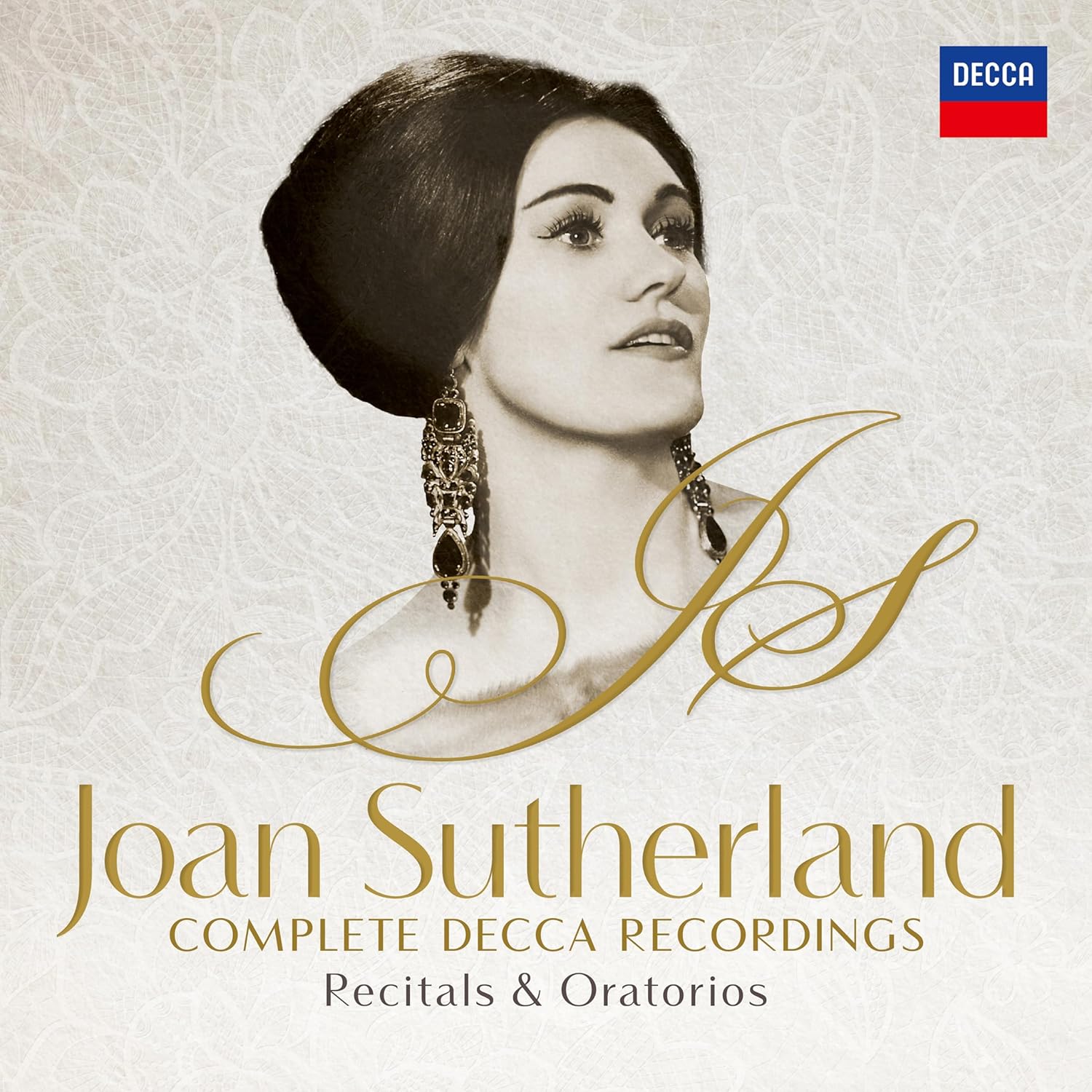 Joan Sutherland: The Complete Decca Recordings – Recitals & Oratorios (Decca)
Joan Sutherland: The Complete Decca Recordings – Recitals & Oratorios (Decca)
The voice of La Stupenda must have been the most recorded in history, given Decca’s lavish heyday (La Divina, Callas, just missed EMI's stereo best). Even before we get to the two boxes of complete operas, with no release date in sight, the recital and oratorio set numbers 37 CDs. And they really do run a surprising gamut. The earliest is the least typical, Bliss’s A Song of Farewell in 1954; a year later, Sutherland would be the first Jenifer in Tippett’s The Midsummer Marriage. The famous Royal Opera breakthrough came with Lucia di Lammermoor, the two big scenes being recorded in 1959. The voice here and in “The Art of the Prima Donna” is light, silvery and, of course, dazzling in coloratura.
That phenomenal technique in trills, runs and top notes remained, but it’s surprising how soon the more heroic tone to the middle range emerged – in Weber’s “Ocean! Thou mighty monster” from Oberon, launching the two discs of “Command Performance” in 1963. Sutherland really does show everything off to best advantage, with plenty of display (the Shadow Song from Meyerbeer’s Dinorah is irresistible), and popular sentiment in the songs which follow the arias, ending in “Home, Sweet Home”. Another high point is “Romantic French Arias”, spotlighting Charpentier’s lovely Louise and Massenet’s Cendrillon among others.
Bel canto is the core of much of the rest, but there are big surprises: while the Mozart disc contains many of the much-harped-upon faults – a droopy manner at times, indistinct diction – the Wagner selection is a triumph, blazing and word-clear; a pointer to what might have been if husband Richard Bonynge had relinquished some of the control. He's a better conductor than used to be claimed, though: the second of the two Messiahs has sprightly approaches to many of the choral numbers, with a lightness from the Ambrosian Singers and the English Chamber Orchestra by no means common at the time (1970).
The Verdi Requiem has the high-octane input of Solti, though Sutherland doesn’t step away from the seraphic until the “Libera Me”. It’s a joy to be reminded that Pavarotti was supreme in the “Ingemisco”, and he seems to bring out the best in his soprano both in the “Operatic Duets” disc – my LP’s second side, including treats from Otello and Aida, was virtually worn out – and the stunning “Live from Lincoln Centre” gala. It’s hard to imagine a better late stretch of Il trovatore than this, with Marilyn Horne as Azucena (the complete recording is underrated). Even in such company, Sutherland excels, with a run up the scales in the final scene which captures her sheer artistry to perfection.
Sutherlandworld extends to camp but delicious Xmasiana, Noel Coward (with the master making a couple of special appearances) and the numbers from the musicals in “Love Live Forever”. The song repertoire is light but extensive, though “Serate Musicali” is a bit of a non-starter with the home-recording Les Avants room killing any bloom around the voice. Still, we have to have it all, the rough and the smooth, and this is a loving, well-documented assemblage. Bring on the operas! David Nice
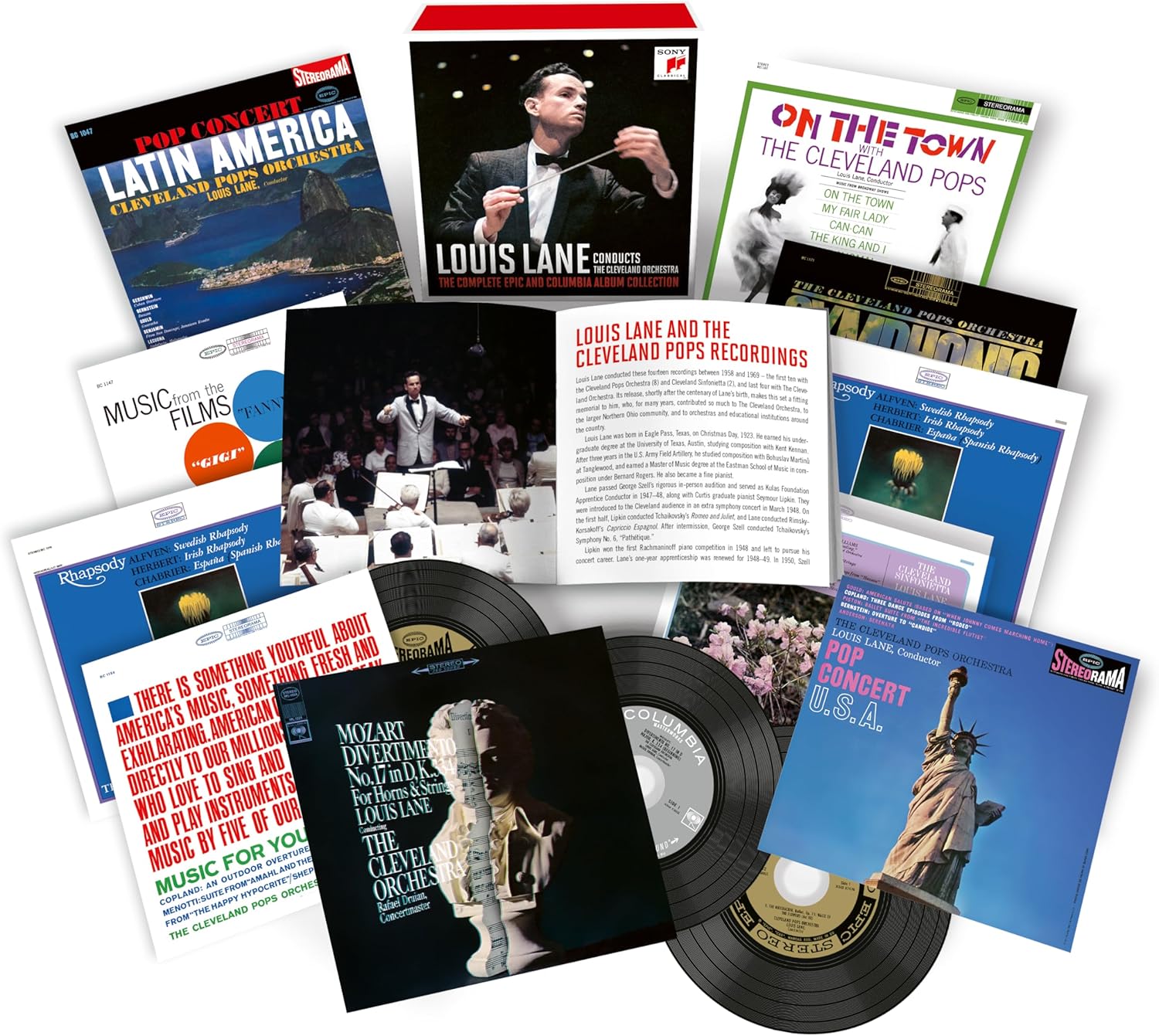 Louis Lane: The Complete Epic and Columbia Album Collection (Sony)
Louis Lane: The Complete Epic and Columbia Album Collection (Sony)
Louis Lane’s name has been lodged in my subconscious for some years, after I came across his recording of Copland’s An Outdoor Overture squeezed onto a budget compilation. Yes, we’re not Wagner’s Tristan prelude, but Copland’s nine-minute romp is a still a gorgeous, catchy work, and Lane’s 1961 recording sounds freshly minted. It’s in this new Sony box, the opener to the portentously titled Music for Young America, alongside rarities by Menotti, Wallingford Riegger and Herbert Elwell. You wonder how an early 1960s Young American would have reacted to being given a copy of that album instead of something by the Beatles or Beach Boys, but those were different times. And, in case you’re curious, the short suite from Elwell’s ballet The Happy Hypocrite is a lot of fun. Lane conducts the Cleveland Pops Orchestra, effectively the Cleveland Orchestra during the summer months with some of the principal players on leave. Not that you’d notice much of a difference, Lane securing punchy, virtuosic playing from a group presumably enjoying a break from a diet of Austro-German classics under George Szell. Szell had employed Lane as an apprentice conductor in the late 1940s; Lane stayed on as assistant and then associate conductor until 1970, holding the fort after Szell’s death until Lorin Maazel took over in 1972. You can’t imagine Szell tolerating a substandard assistant, and he’s on record as calling Lane “an absolutely first-rate talent.”
We get 14 albums here, recorded between 1958 and 1970, their original sleeve designs intact – the only problem with this being that you need a magnifying glass to read the notes. That gripe apart, there’s some seriously good music making on offer. Pop Concert USA includes a gorgeous little Serenata by Leroy Anderson and three extracts (with a few slight cuts) from Copland’s Rodeo. Plus, the suite from Walter Piston’s ballet The Incredible Flutist, a delightful score which really should be better known. Lane’s players add plenty of boisterous crowd noises during the circus march, and we do get to hear the dog barking. Pop Concert Latin America contains a brilliant version of Gershwin’s Cuban Overture along with Arthur Benjamin’s cheesy-but-fun Jamaican Rumba and two miniatures by Cuban composer Ernesto Lecuona. I’d never heard of Blas Galindo before: his Sones de Mariachi is worth hearing. Lane had a knack for choosing interesting repertoire, much of which can’t have been familiar to these players. On the Town with the Cleveland Pops contains instrumental Broadway numbers by Cole Porter, Bernstein and Richard Rodgers, superbly performed. Symphonic Marches strays off the beaten track. You’d expect Elgar’s first Pomp and Circumstance march to make an appearance, but Lane includes an extract from Hindemith’s Symphonic Metamorphosis and, even better, the “Entrance of the Little Fauns” from Pierné’s wonderful Cydalise et la Chevre-pied. This may be less than two minutes long, but it’s quite wonderful. A disc of film music includes the two string movements from Walton’s Henry V suite alongside numbers drawn from Gigi, State Fair and Louisana Story.
Romances and Serenades, taped with the Cleveland Sinfonietta, isn’t what you’d expect from the album title. We get a sweet, unsentimental Lark Ascending with Rafael Druian as soloist along with pieces by Delius and Peter Warlock. Jean Françaix’s little Serenade is a gem, with some superb trombone playing in the closing “Vivace”. Rhapsody opens with a crisp account of Chabrier’s España before heading off-piste with some Enescu, Victor Herbert and Liszt. And there’s Alfvén’s first Swedish Rhapsody, its catchy main theme once familiar as an ice cream van jingle. Cleveland Orchestra principal flute Maurice Sharp plays Honegger, Howard Hanson and Charles Griffes. Dip into most of these discs and you’ll find something enchanting that you’ve never heard before. From CD 11 onwards, things become a tad more formal. Mozart’s K334 Divertimento was new to me; played by the regular Cleveland Orchestra it fills an entire LP. They also give us a coupling of first symphonies by Mendelssohn and Schubert, both rarities. As is Beethoven’s complete ballet score to The Creatures of Prometheus, very well-played and recorded. Lane’s final Cleveland recording was another offbeat one, Walton’s Bach ballet The Wise Virgins paired with Tommasini’s The Good-Humoured Ladies. The latter was arranged from seven Scarlatti keyboard sonatas. Tommasini’s treatment of them anticipates Stravinsky’s Pulcinella, though the results aren’t as spiky or memorable. Lane’s later career included positions with orchestras in Dallas and Atlanta plus several academic posts; on the basis of what we hear in this set it’s a pity that his recorded output wasn’t more extensive. Still, what we have here is impressive, the analogue recordings nicely remastered. Sony’s booklet is a pleasure to read, the track listings and notes accompanied by session photos, posters and session sheets.
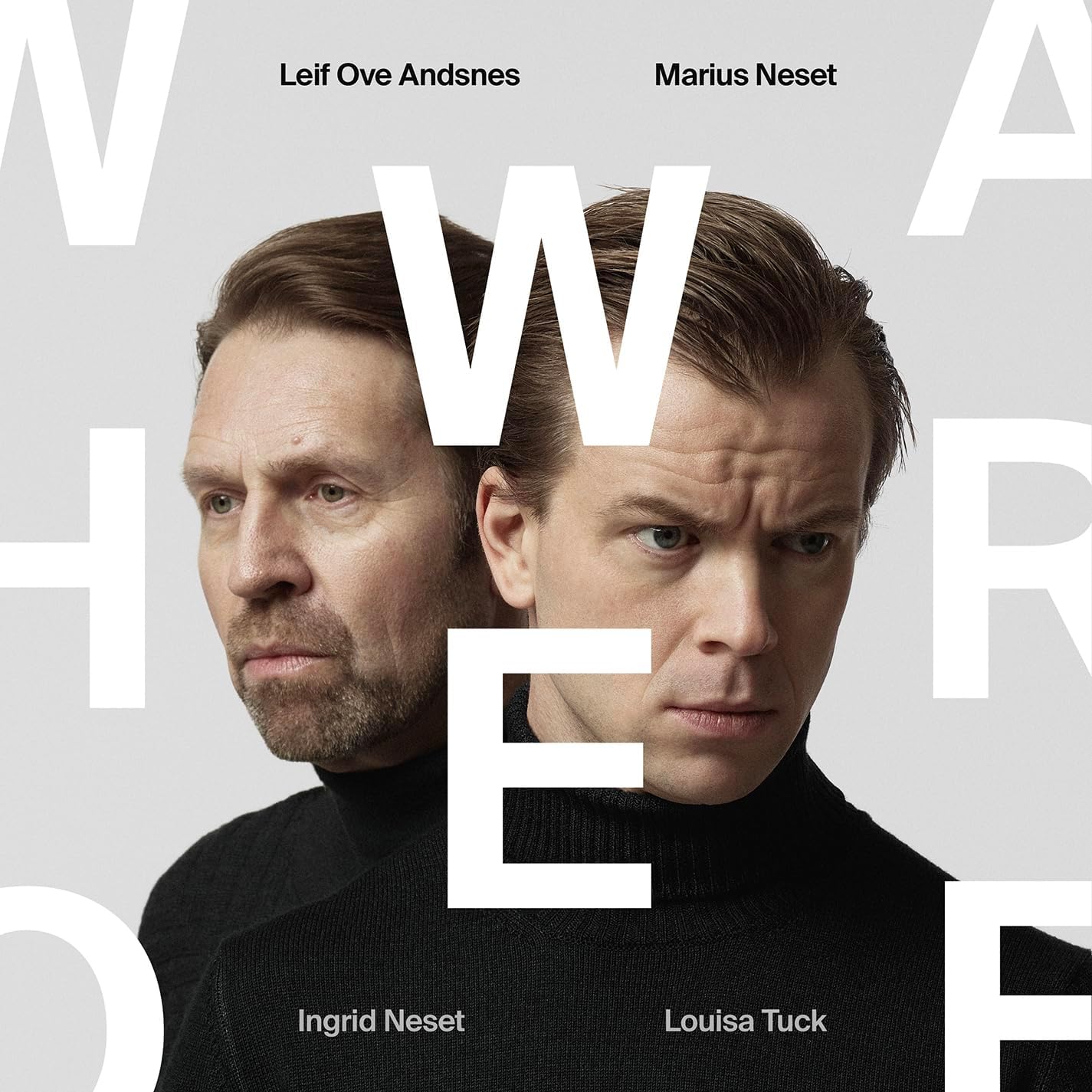 Who We Are: Music by Marius Neset Marius Neset (saxophones), Leif Ove Andsnes (piano), Ingrid Søfteland Neset (flute), Louisa Tuck (cello) (Simax)
Who We Are: Music by Marius Neset Marius Neset (saxophones), Leif Ove Andsnes (piano), Ingrid Søfteland Neset (flute), Louisa Tuck (cello) (Simax)
Marius Neset’s first arrival on the jazz scene made such an impact, one reviewer was still calling him a “saxophone Wunderkind” at the age of 31. But that was then, and this is now. In 2011 he received his first commission to write a large ensemble work and a flow of major compositions has continued unabated ever since, often with the saxophonist himself or his quartet in the solo spot, but more recently a piece for symphony orchestra: the atmospheric and beautifully crafted Every Little Step for the Bergen Philharmonic Orchestra and Edward Gardner.
Who We Are is something different and a real success. It is a chamber music project which has at its heart the wish of two of Norway’s top musicians – Neset and Leif Ove Andsnes – to commit the time to work together and learn from each other. Their joint ambition was helped by Andsnes, as Director of the Rosendaal Music Festival, being able to commission Neset to develop their work together. Neset says he listened intently to the wide range of Andsnes’s playing, and says that “when his sound had become embedded in my head, I could begin to write for him.” There are plenty of expressions of how the two musicians’ mutual supportiveness, friendship and trust has built, but perhaps the best is left to the final track: Andsnes keeps a fundamental lightness of being and astonishing at-speed responsiveness “Chaconne Part 3”.
The joys and contrasts on this album are phenomenal. One thing to keep marvelling at is the authority and beauty in the shaping of phrases, as Andsnes finds symmetry, truth and natural flow in Neset’s compositional language. And when Andsnes and Ingrid Søfteland Neset - the saxophonist’s sister who is principal flautist in Stavanger – dig in to Neset’s composition “Legacy” the results are glorious. Louisa Tuck’s opening of “Uncertainty” has a lightness poise and balance which serve as a reminder of what a fine cellist she is (as soloist in a recent Strauss Don Quixote with the Oslo Philharmonic/ Petrenko she is superb). But there are surprises too. In “Waterfall Jig”, Tuck produces some deliciously greasy sounds from the cello, and whereas flautist Søfteland Neset clearly has the virtuosity to make light work of, say, Ibert, this listener certainly wasn’t expecting the forceful and breathy Ian Anderson sounds she produces at the beginning of “Road to Polaris”.
This is a quality production, beautifully recorded at Rainbow Studios in Oslo in the depths of winter. The liner notes dig deep into some of the complexities of Neset’s compositional methods, and in particular his fascination with asymmetric rhythmic patterns. Exactly how Neset and Andsnes are able to turn some truly outlandish time signatures into such infectious grooves through their sheer rhythmic energy is going to remain an alchemical mystery. But that is exactly what they do. Sebastian Scotney
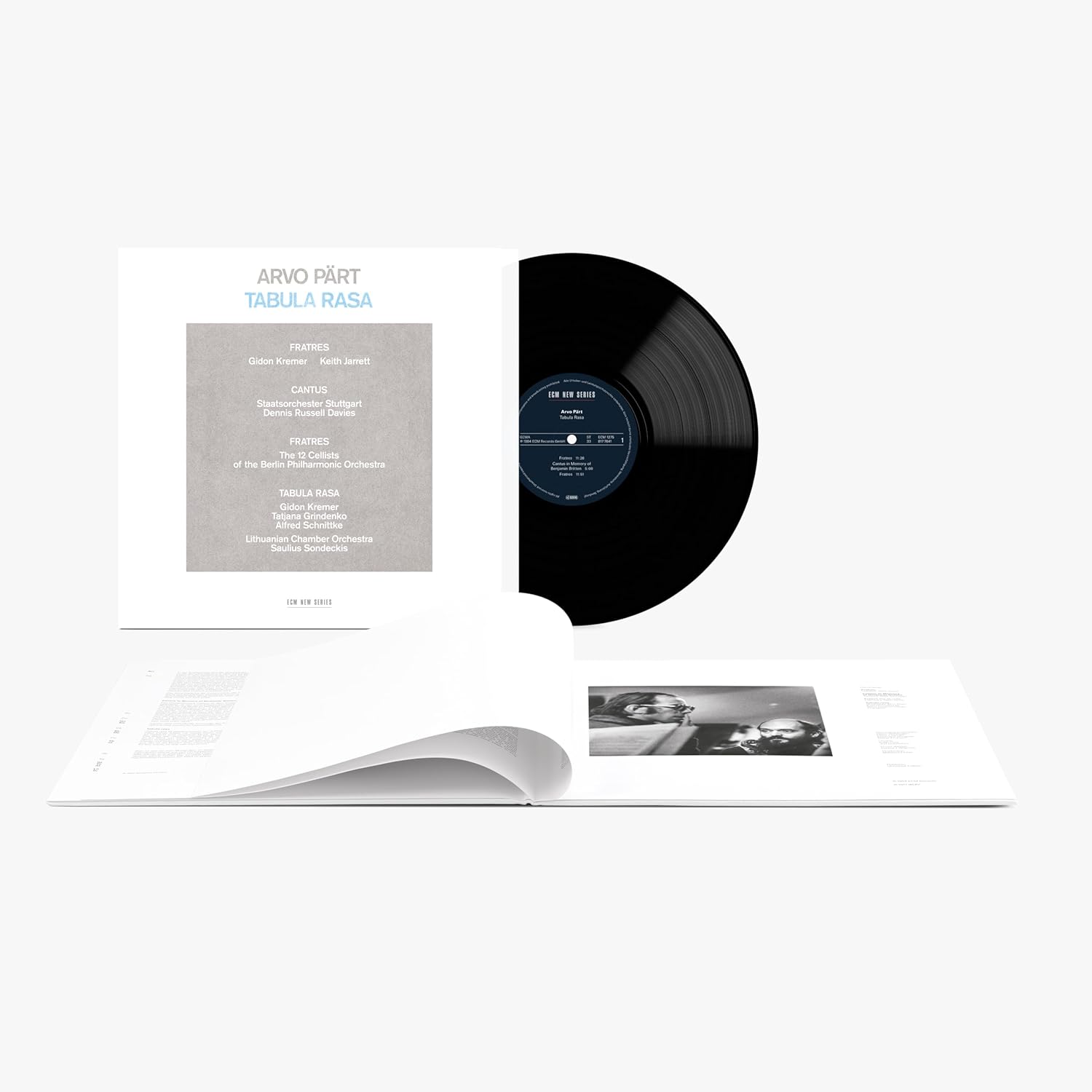 Arvo Pärt: Tabula Rasa Gidon Kremer, Keith Jarret et al (ECM New Series)
Arvo Pärt: Tabula Rasa Gidon Kremer, Keith Jarret et al (ECM New Series)
The 1980s still feels like recent history to me, so it’s odd to think of this reissue as a historical release. Manfred Eicher’s ECM Records began life in 1969 as a jazz imprint, the ‘New Series’ created in 1984 as a home for ‘notated’ (ie classical) music. Tabula Rasa was the first disc to be released: Estonian composer Arvo Pärt’s name is now synonymous with the label (much as Columbia and Decca supported Stravinsky and Britten), the recording bringing the composer international recognition. It features contributions from Gidon Kremer, Keith Jarrett and Alfred Schnittke. If you’ve not heard it, where have you been? The CD has never gone out of print, and this release is a replica of the original gatefold vinyl. Pärt’s studies into plainchant and polyphony led to a stylistic volte-face in the mid-1970s and Tabula Rasa reflects the change. Wolfgang Sandner’s notes describe Pärt’s later music as ‘like the hesychastic prayers of a musical anchorite, simple, illuminating and full of love.’ Heady words, but a piece like 1977’s Fratres, heard here in versions for violin and piano and for 12 cellos, hasn’t lost its power to surprise. Kremer’s manic prelude on the two-player version is terrific here, silenced by a resonant chord from Jarrett. Though I marginally prefer the sublime cello transcription, performed here by cellists from the Berlin Philharmonic.
Title track Tabula Rasa is the longest work here, a spectral concerto for two violins backed by prepared piano (played by Schnittke!) and strings, Kremer teamed with Tatiana Grindenko. Two movements contrast frenzied energy with stasis, the long slow second half built out of the simplest thematic material and still one of the most haunting contemporary works in the repertoire. And there’s the Cantus in Memory of Benjamin Britten, an eloquent tribute to a composer Pärt never had the chance to meet, who he admired for ‘the unusual purity of his music’. This disarmingly simple work, a canon built around descending A minor chords and a tolling bell, gets a definitive recording here. Dennis Russell Davies conducts the strings of the Staatsorchester Stuttgart, giving the dark closing chords a fierce intensity. The bell has the last word.
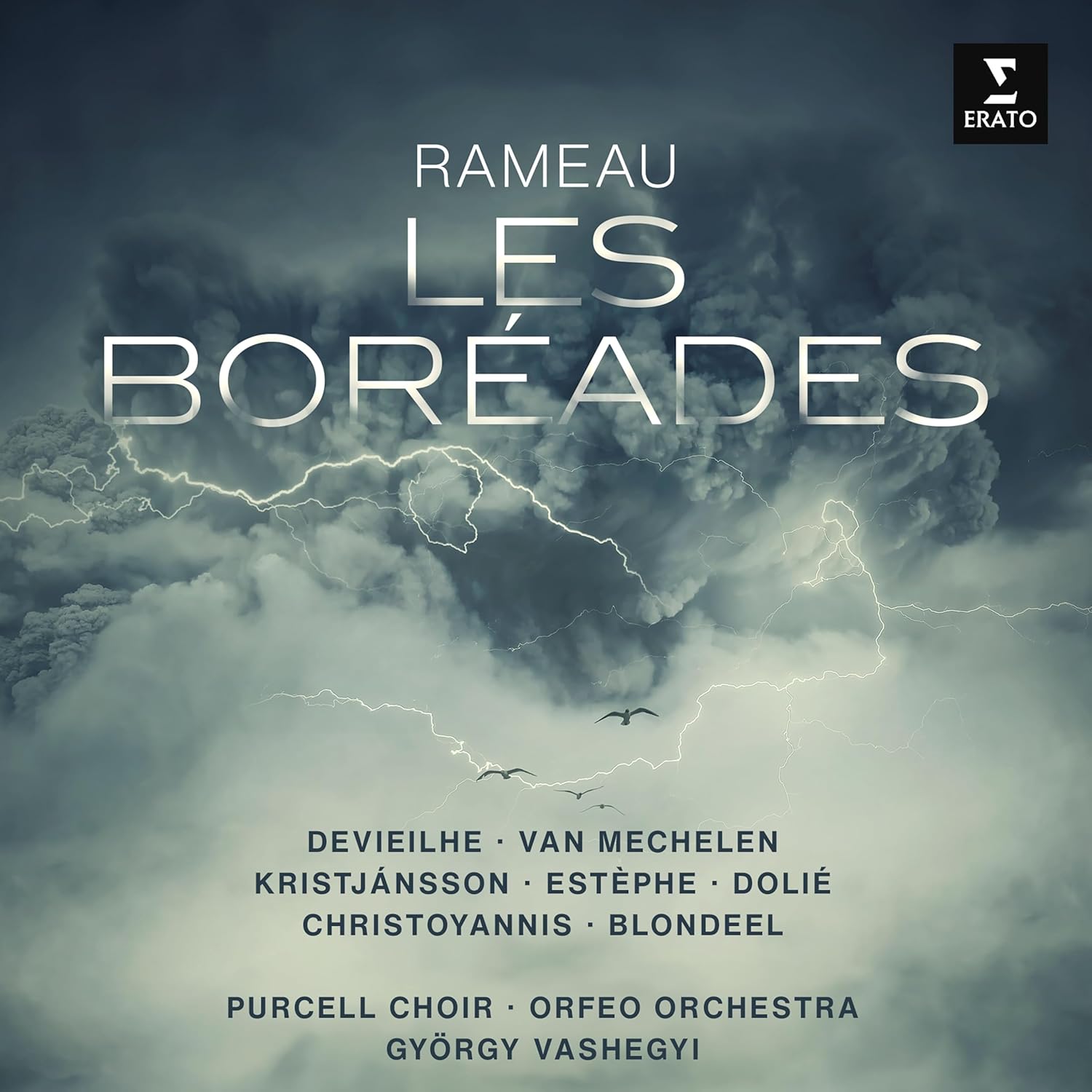 Rameau: Les Boréades Purcell Choir, Orfeo Orchestra/György Vashegyi (Erato)
Rameau: Les Boréades Purcell Choir, Orfeo Orchestra/György Vashegyi (Erato)
I wasn’t always sure where I stood with Rameau, but discovering Theodor Currentzis’s gloriously “inauthentic” The Sound of Light album opened my ears. This album, of the tragédie lyrique Les Boréades (1763) comes from the other end of the spectrum – musicologically scrupulous and performed with period instruments and all the best accoutrements of historically-informed performance – and is equally thrilling, in a different way. And, I’m not always a huge fan of opera on record, not least because functional recitative does not translate so well from the theatre to repeated audio-only listening. But Rameau’s recitative, orchestrally accompanied rather than with just harpsichord, is often ravishing in its own right, before we even get to the arias. And the arias are spectacular showpieces - Sabine Devielhe’s “Un horizon serein” sparkles, and “Écoutez l’Amour qui vous presse”, with Bendikt Kristjánsson floating above the choir, is lovely.
The 29-voice choir is sparingly used, but treads lightly in keeping with the whole project, and their infrequent ensemble numbers are a treat, not least the stormy finale to Act III, featuring Devielhe, Reinoud van Mechelen, the choir and a battery of picturesque percussion. But it is perhaps in the instrumental dances that the whole thing comes most to life. There are lots of them – gavottes, menuets and the rest – scattered throughout the score, and the Hungarian Orfeo Orchestra, under György Vashegyi are poised and spry, quick for sure, but never rushed: the perfect accompaniment for dancing. You can feel the rise and fall of the dancers in the playing. The Act I Contredanse is brilliant (and makes an excellent point of comparison with the Currentzis album, on which it also features) as is the “Entrée de Polymnie”, with its delicious notes inégales.
There is a lot of music here: 96 tracks (some very short, of course), lasting some two-and-a-half hours in total. The plot, as so often in this kind of opera, is both high-flown – all love triangles and magic arrows – and also pretty irrelevant. Read the synopsis or don’t: it won’t make much difference. What is extraordinary is the magic that Rameau can whip up from such unlikely source material: musically, it is a delight. Bernard Hughes
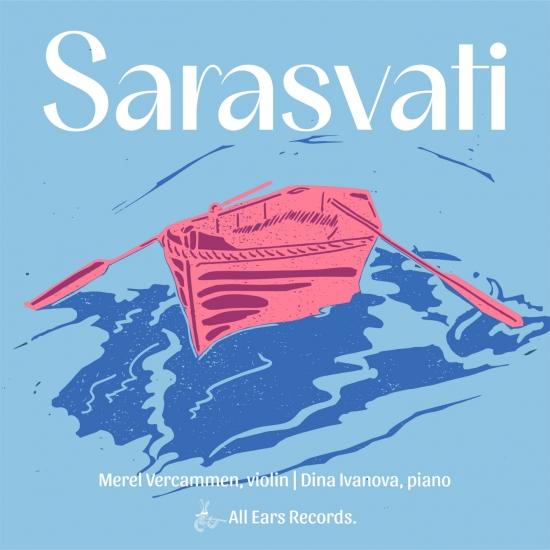 Sarasvati: Violin Sonatas by Debussy and Poulenc, plus works by Joey Roukens, Mathilde Wantenaar and Alisson Kruusmaa Merel Vercammen (violin) & Dina Ivanova (piano) (All Ears Records)
Sarasvati: Violin Sonatas by Debussy and Poulenc, plus works by Joey Roukens, Mathilde Wantenaar and Alisson Kruusmaa Merel Vercammen (violin) & Dina Ivanova (piano) (All Ears Records)
This performance here of Poulenc’s 1942 Violin Sonata does more than stand comparison with versions by far better-known names, it might be the most convincing of all recordings of this tricky work. Violinist Merel Vercammen and pianist Dina Ivanova have performed as a duo for six years and really get under the work’s complexities and contrasts and unfurl its story superbly. It is certainly an asset to have a pianist like Ivanova, steeped in the Russian tradition, to savour the extraordinary moment when the rabbit is let out of the hat in the first movement, and Poulenc suddenly quotes Tatiania’s ‘Letter Scene’ from Eugene Onegin. Later in the work, the echoes of Rachmaninov in the second movement and of Stravinsky in the third are also brought to life in ways that are equally persuasive, idiomatic, unflashy and just plain honest. And whereas Vercammen’s biography still trots out factoids about teachers and her competitions long gone, these days she is in her mid-thirties, this is her fifth album, and there is real character, panache and maturity in her playing.
The Debussy Violin Sonata – another work from war-time, 1916 – also receives a purposeful and idiomatic recording. There are also three works by contemporary composers. Vercammen has recorded works by Mathilde Wantenaar on a previous album, and Wantenaar’s four-minute Petit morceau here works as an elegant bridge between the Debussy and the Poulenc. Estonian composer Alisson Kruusmaa’s Mesmerism is short and atmospheric. Sarasvati by one of the Netherlands’ most successful composers is far more ambitious. One of the meanings of the Sanskrit word of the title is to flow like a river, and Roukens described his way of writing as ‘protean’ and that he creates ‘a language that is easily capable of plastically transforming from one type of music to another in a natural way.’ Vercammen and Ivanova have clearly put in concentrated work to support this vision. The recording, made in the wonderful acoustic of the small hall of the Muziekgebouw in Eindhoven, is just fabulous. Sebastian Scotney
- More classical reviews on theartsdesk



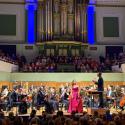
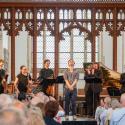
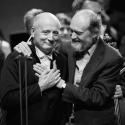








Add comment